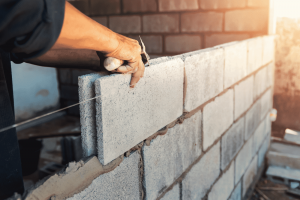What are the 7 Building Materials?
Introduction
When it comes to constructing buildings, bridges, and various structures, the choice of building materials plays a crucial role in determining the durability, safety, and overall aesthetics. There is a vast array of building materials available, each with its unique properties and advantages. In this article, we will explore the seven most commonly used building materials that have stood the test of time and continue to shape the construction industry.
1. Concrete
Concrete is one of the most widely used building materials globally, and for good reason. It consists of a mixture of cement, water, aggregates (such as sand, gravel, or crushed stone), and sometimes additives. The resulting mixture is a versatile and robust material that can be poured into molds, creating various shapes and forms.
Concrete is renowned for its strength and durability, making it ideal for constructing foundations, walls, columns, and pavements. Additionally, it has good fire resistance and can withstand natural disasters better than many other materials. Its adaptability and cost-effectiveness have made it a staple in modern construction.
2. Steel
Steel is a metal alloy primarily composed of iron and carbon, and it is one of the most crucial construction materials. Its high strength-to-weight ratio makes it suitable for tall structures like skyscrapers, bridges, and industrial buildings. Additionally, steel is ductile, meaning it can withstand heavy loads and deform without breaking.

Steel also offers excellent recyclability, making it an environmentally friendly choice. It is often used in combination with concrete to form reinforced concrete, which capitalizes on both materials’ strengths, resulting in robust structures capable of handling significant stresses.
3. Brick
Bricks have been used as building materials for thousands of years, dating back to ancient civilizations. They are typically made from clay, which is molded and then fired in a kiln to achieve strength and durability. Bricks come in various shapes, sizes, and colors, allowing for versatile design options.
Brick construction offers excellent thermal insulation properties, helping maintain a comfortable indoor climate while reducing energy consumption. It is commonly used in walls, both for structural support and aesthetics. Brick’s timeless appeal has made it a popular choice for traditional and contemporary architecture alike.
4. Wood
Wood is a renewable and eco-friendly building material with a unique aesthetic appeal. It has been used in construction for centuries and continues to be a popular choice in many parts of the world. Different types of wood, such as softwood and hardwood, have distinct characteristics that make them suitable for various applications.
Wood is relatively lightweight, making it easy to work with and transport. It also offers good thermal insulation properties. However, wood is susceptible to moisture, pests, and fire, which can affect its longevity if not adequately treated and maintained. Despite this, with proper care and treatment, wooden structures can last for generations.
5. Glass
Glass is a transparent and versatile building material that has gained prominence in modern architecture. It is made from sand and other raw materials, heated to high temperatures until it melts and then shaped into various forms. Glass allows natural light to penetrate buildings, creating a visually appealing and energy-efficient environment.

Modern advancements in glass technology have resulted in stronger, energy-efficient, and safety-enhanced glass products. From windows and facades to artistic features, glass has expanded the possibilities of architectural design while maintaining its functionality as a building material.
6. Brickcrete (Autoclaved Aerated Concrete)
Brickcrete, also known as Autoclaved Aerated Concrete (AAC), is a lightweight and eco-friendly building material. It is produced by mixing finely ground sand or fly ash with cement, lime, water, and an expanding agent. The mixture is then cured under high-pressure steam, creating a cellular structure.
AAC offers excellent thermal insulation, fire resistance, and soundproofing properties. Its lightweight nature allows for easier handling during construction, reducing labor costs and transportation efforts. AAC blocks are commonly used for walls, floors, and roofs, contributing to sustainable and energy-efficient buildings. https://citibuildconstruction.com.au/builder-vaucluse/
7. Stone
Stone has been a traditional building material for centuries, and it continues to be used in both historical restoration projects and contemporary designs. Stones like granite, limestone, marble, and sandstone are commonly used in construction due to their durability and natural beauty.
While stone offers excellent strength and longevity, working with it can be labor-intensive and time-consuming. However, the results are often breathtaking, with stunning architectural elements and facades that stand the test of time.
Conclusion
In conclusion, the construction industry benefits from a diverse range of building materials, each offering its unique set of advantages. Concrete, steel, brick, wood, glass, brickcrete, and stone have all played significant roles in shaping the buildings we see around us. Whether it’s the strength of steel, the versatility of concrete, the timeless appeal of brick, or the natural beauty of wood and stone, the choices of building materials continue to evolve with technology and environmental considerations.
As sustainability and energy efficiency become increasingly important, the construction industry is likely to explore even more innovative materials and techniques, further shaping the structures of the future. By understanding the characteristics and applications of these seven essential building materials, architects, engineers, and construction professionals can continue to create safe, functional, and aesthetically pleasing spaces for generations to come.
